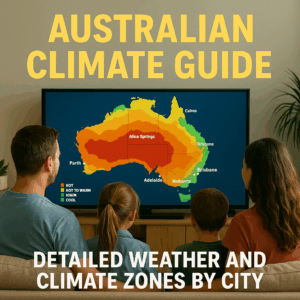Explore detailed insights into public transport systems in Sydney, Melbourne, Brisbane, Perth, Adelaide and Canberra. Learn about coverage, costs, accessibility, and recent trends.
Introduction
Public transport is a backbone of urban life in Australia’s major cities, influencing mobility, accessibility, and environmental outcomes. As of 2025, only around half of residents in the five largest Australian cities enjoy all-day frequent public transport services within walking distance. Sydney leads with 67% coverage, yet cities like Brisbane and Perth still struggle to provide reliable, frequent transit to broad populations. This article presents a comprehensive comparison of public transport systems across major Australian cities, providing data on usage, accessibility, fare policies, infrastructure, and emerging trends shaping Australia’s urban mobility landscape.
Sydney Public Transport System: The Nation’s Leading Network
Sydney’s public transport is the most used and extensive on the continent. In 2024, Sydneysiders undertook more than 500 million public transport trips annually, primarily on suburban trains and buses, supplemented by ferries and the Sydney Metro.
Coverage & Accessibility
- Sydney ranks highest for public transport access, with 67% of residents within 800 metres of a service running at least every 15 minutes between 7am and 7pm.
- Frequent services extend approximately 25 km from the CBD, connecting suburbs and the city center effectively.
- Inner areas like the CBD, Botany, and Eastern Suburbs benefit from dense coverage, whereas outer regions such as Penrith and Campbelltown have lower access.
Service Types & Features
- The network includes comprehensive suburban trains, buses, ferries, and the expanding Sydney Metro, Australia’s first fully automated metro.
- Contactless Opal card usage is universal, enabling seamless transfers and fare capping to reduce travel costs.
Costs & Affordability
- Sydney’s annual household public transport spend averages around AUD 50 weekly, one of the highest nationally but comparable to Melbourne.
Sydney’s commitment to infrastructure upgrades and high-frequency services underlines its position as Australia’s transit leader, although outer suburban gaps continue to challenge equitable access.
Melbourne Tram and Train Network: The Iconic Urban Transport System
Melbourne is renowned for its vast tram system, boasting the world’s longest light rail network integrated with an extensive train and bus system.
Coverage & Accessibility
- About 52.5% of Melburnians have frequent all-day services within walkable distances, primarily centered within 15 km of the CBD.
- Tram routes predominantly serve inner and middle suburbs, filling service gaps that heavy rail lines don’t cover.
Patronage & Service Characteristics
- Melbourne reported over 400 million public transport trips annually, with suburban trains and trams seeing similar per capita patronage.
- Night bus services provide access to entertainment precincts after standard service hours.
Costs & Fare Policies
- Melbourne public transport remains Australia’s most expensive. Households spend around AUD 53 weekly on public transit, higher than Sydney.
- The city implements a Myki card system, supporting integrated ticketing across modes.
Though well-known for its reliable trams, Melbourne faces challenges expanding service frequency in outer suburbs and reducing inequality in access between wealthier and poorer areas.
Brisbane Public Transportation 2025: Rapid Growth Amid Gaps
Brisbane scores lowest among Australia’s large capitals for public transport access, with only 33.7% of residents meeting the frequent service standard.
Accessibility & Coverage
- Frequent all-day service generally extends roughly 8 km from the CBD, with areas like the Hills District and Browns Plains underserved.
- Inner-city suburbs such as Annerley and Indooroopilly benefit from better-connected transit.
Mode Share & Usage
- Only 14% use public transport to commute, while 75% rely on private vehicles, reflecting convenience and limited network spread.
- The network includes buses (the backbone), trains, and ferries along the Brisbane River (CityCat).
Recent Changes & Fare Initiatives
- Queensland has introduced permanently reduced public transport fares at 50 cents to boost patronage, yielding a sharp increase in passengers along key corridors.
- Despite improvements, extended bus wait times (average 12 minutes) curb efficiency.
Brisbane’s transport authorities face a crucial balancing act of expanding rail and bus infrastructure to match the city’s fast-growing population and reduce car dependency.
Perth Transit System Overview: Growing but Uneven Coverage
Perth’s transport system comprises trains, buses, and ferries, aiming to serve a spread-out metropolitan area with a population now exceeding Adelaide.
Coverage & Access
- Only about 40.5% of residents have access to reliable public transport between 7am and 7pm, ranked second lowest among capital cities.
- Frequent services mostly cover the city center and inner suburbs like Belmont and Fremantle, with many outer areas poorly served.
- Public transport use remains low, with 78% of commuters driving private vehicles.
Infrastructure & Services
- Rail network expansions improved access east and south, but bus services remain vital for suburbs.
- Dedicated bus lanes have helped decrease travel times on some routes.
Costs & Affordability
- Perth’s average household spends approximately AUD 47 on public transport weekly, lower than Melbourne or Sydney but above Canberra.
Ongoing investments look to close coverage gaps and enhance service frequency to raise patronage and reduce urban congestion.
Adelaide Public Transport Options: Compact and Affordable
Adelaide operates a modest but reliable system of trains, trams, and buses primarily focused on the metropolitan region.
Accessibility
- Nearly 47.6% of residents have access to frequent all-day services, mostly within 8 km of the city center.
- Service availability is best in the CBD and surrounding suburbs like Prospect and Unley.
- Outer areas such as Onkaparinga and Port Adelaide experience limited public transport, leading many to drive.
Usage & Mode Share
- Approximately 80% of commuters use private vehicles; public transport use remains modest though stable.
Fare & Cost Structure
- Adelaide’s public transport fares are the lowest among major cities, contributing to affordability despite limited reach.
- The city benefits from an integrated ticketing system covering buses, trains, and trams.
Plans include modest network expansions and increased frequency to better serve growing suburban populations.
Canberra and Smaller Cities: Emerging Models and Free Fares
Canberra, less populous but highly connected, recently revised its fare system, introducing free travel on Fridays as part of a partially free public transport model. This initiative reflects experimentation with accessibility and environmental goals.
In contrast, other smaller capitals and regional cities are extending free or low-cost bus systems to ease congestion and improve equity, such as the Northern Territory’s bus fare-free extensions through mid-2025.
Innovations and National Trends in Australian Public Transport
Fare Integration and Contactless Payments
Major cities now deploy contactless smartcards (Opal, Myki, Translink cards) and mobile payments, enhancing user convenience and operational efficiency.
Sustainability and Emission Reduction
In line with climate goals, Australian cities are increasing the share of electric buses, promoting active transport links, and developing Mobility as a Service (MaaS) platforms integrating various transport modes under single apps.
Ridership Trends and Challenges
- Post-pandemic patronage has partially rebounded but remains below pre-2019 levels except for Sydney and South East Queensland.
- Urban sprawl and socio-economic inequalities continue to challenge equitable access in cities like Brisbane, Perth, and Adelaide.
- Transport emissions remain Australia’s second-largest source of greenhouse gases, underlining the need for robust public transport investments.
Public Transport Systems
Australia’s public transport systems across major cities show wide variation in coverage, frequency, affordability, and user experience. Sydney leads with the highest accessibility and an integrated multimodal network, followed by Melbourne’s iconic tram and train system. Cities like Brisbane and Perth face significant challenges providing high-frequency services beyond their inner suburbs. Adelaide offers affordability but limited reach, while Canberra experiments with free fare models. Emerging technologies, fare reforms, and infrastructure expansions across cities will shape the future of Australian urban mobility, helping reduce congestion, improve accessibility, and lower emissions.

